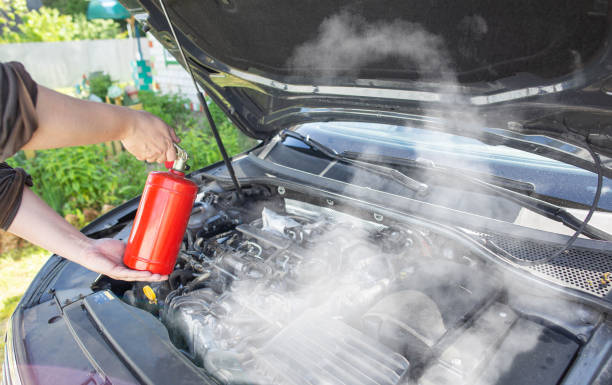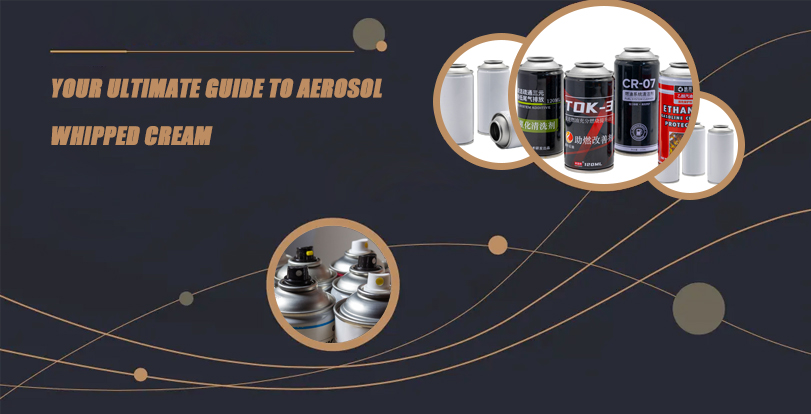As a car owner, I’m sure you’ve handled engine oil during a top-up or an oil change. It’s slick, dark, and essential for my engine’s health. But a nagging question sometimes pops into my head, especially when I see steam rising from a hot engine or hear about vehicle fires: can this vital fluid actually catch fire? It’s a concern that touches on safety, vehicle maintenance, and peace of mind. So, I decided to dive deep into this topic to understand the risks, the science, and the practical steps we can all take.
Understanding the Basics: Flammable vs. Combustible
Before we get into the specifics of engine oil, it’s crucial to understand two terms that are often used interchangeably but have distinct meanings in the context of fire safety: flammable and combustible.
- Flammable liquids: These are substances that can ignite easily at ambient temperatures. They have a flash point below 37.8°C (100°F). Think of gasoline or rubbing alcohol – a small spark is often enough.
- Combustible liquids: These liquids require higher temperatures to ignite. Their flash point is at or above 37.8°C (100°F) but below 93.3°C (200°F) for one category, and above 93.3°C (200°F) for another. Engine oil falls into this latter category.
So, right off the bat, this tells us that engine oil is combustible, not flammable. This means it won’t just burst into flames if you strike a match near an open can at room temperature, unlike gasoline. It needs more encouragement in the form of heat.
The Science Bit: Flash Point and Autoignition Temperature
Two critical properties determine how and when a liquid like engine oil can ignite:
-
Flash Point: This is the lowest temperature at which a liquid gives off enough vapor to form an ignitable mixture with the air near its surface. If an external ignition source (like a spark or flame) is present when the oil reaches its flash point, the vapors can ignite.
- For most conventional engine oils, the flash point is typically above 200°C (392°F).
- Synthetic oils often have even higher flash points, sometimes exceeding 230°C (446°F).
-
Autoignition Temperature (or Spontaneous Ignition Temperature): This is the minimum temperature at which a substance will ignite spontaneously in a normal atmosphere without an external ignition source like a spark or flame. The heat of the surroundings alone is enough.
- For engine oil, the autoignition temperature generally ranges from 260°C (500°F) to 370°C (700°F) or even higher, depending on its specific composition and additives.
Here’s a quick comparison to put things in perspective:
| Substance | Typical Flash Point | Typical Autoignition Temperature | Classification |
|---|---|---|---|
| Gasoline | Around -43°C (-45°F) | Around 280°C – 470°C (536°F – 880°F) | Flammable |
| Diesel Fuel | 52°C to 96°C (126°F to 205°F) | Around 210°C (410°F) | Combustible |
| Engine Oil (새로운) | 200°C to 270°C (392°F to 518°F) | 260°C to 370°C+ (500°F to 700°F+) | Combustible |
Note: These are general ranges and can vary based on the specific product, additives, and age or contamination of the oil.
So, Can Engine Oil Actually Catch Fire in My Car?
The direct answer is yes, engine oil can catch fire, but it requires specific conditions. Under normal operating circumstances in a well-maintained vehicle, the risk is relatively low because engine oil is engineered to withstand high operating temperatures without igniting. Your engine’s normal operating temperature is usually between 90°C to 105°C (195°F to 220°F), which is well below the oil’s flash point.
하지만, certain parts of the engine and exhaust system can get significantly hotter:
- Exhaust Manifold: Can reach temperatures from 300°C to 700°C (572°F to 1292°F) or more.
- Turbocharger: Can operate at extremely high temperatures, sometimes exceeding 800°C (1472°F), with surfaces reaching temperatures that can easily ignite oil.
- Catalytic Converter: Can also reach very high temperatures, typically 400°C to 700°C (750°F to 1290°F).
If engine oil leaks or spills onto these superheated components, it can indeed heat up past its flash point or even its autoignition temperature, leading to a fire.
Scenarios: How Engine Oil Fires Typically Happen
Understanding how these fires start can help us prevent them. Here are the most common scenarios I’ve encountered in my research where engine oil can be a fire hazard:
-
Oil Leaks onto Hot Surfaces: This is the most common culprit.
- A leaking valve cover gasket, oil pan gasket, oil filter seal, or turbocharger oil line can drip or spray oil onto a hot exhaust manifold or turbo housing.
- Once the oil hits a surface hotter than its autoignition temperature, it can ignite. Even if the surface is “only” above the flash point, a stray spark (perhaps from faulty wiring nearby) could trigger ignition.
-
Oil Spills During Maintenance:
- If you spill oil while filling it and it pools near a hot engine component, it could ignite once the engine heats up.
- Using oil-soaked rags to wipe down a hot engine and then leaving them there is also a risk.
-
Major Engine Failure:
- In severe cases, like a thrown rod puncturing the engine block, large amounts of oil can be suddenly released onto hot components or even atomized (turned into a fine mist). Atomized oil is much easier to ignite than pooled oil because of the increased surface area exposed to air.
-
Overheating Engine:
- An engine that is severely overheating can raise the temperature of all its components, including the oil itself, closer to its flash point. While the oil itself might not spontaneously ignite just from engine overheating, it makes any leak much more dangerous.
-
Contamination:
- If engine oil becomes contaminated with a more flammable substance, like gasoline (due to, for example, faulty piston rings or injector issues causing fuel dilution), its flash point can be significantly lowered, making it easier to ignite.
-
Atomized Oil Spray:
- A high-pressure leak (e.g., from a damaged oil cooler line) can create an oil mist or spray. This fine mist has a much larger surface area exposed to oxygen and can ignite far more readily if it encounters an ignition source or a sufficiently hot surface.
Why Isn’t My Car Catching Fire All the Time Then?
Given these potential risks, you might wonder why engine oil-related fires aren’t more frequent. It comes down to:
- High Flash Point and Autoignition Temperatures: Engine oil is designed to be stable at typical engine operating temperatures.
- Contained System: The oil is mostly sealed within the engine.
- Lack of Ignition Source (Usually): Even if oil vapors are present, an ignition source is still needed unless the autoignition temperature is reached.
- Airflow: Airflow around the engine can sometimes help dissipate vapors or cool minor leaks before they reach ignition temperatures, though this isn’t a reliable safety feature.
The problems arise when these safeguards are compromised by wear and tear, poor maintenance, or accidental damage.
My Checklist: Safety Precautions and Prevention
As a responsible car owner, preventing an engine oil fire boils down to regular maintenance and careful practices:
- Regularly Inspect for Oil Leaks: This is my number one tip. Make it a habit to check under your hood and on the ground where you park for any signs of oil drips.
- Look for wet spots, grime build-up (oil attracts dirt), or the smell of burning oil after a drive.
- Pay attention to common leak points: valve covers, oil pan, oil filter housing, and around the turbocharger if you have one.
- Address Leaks Promptly: If you find a leak, don’t ignore it. Get it repaired as soon as possible. What seems like a minor drip can become a major hazard.
- Be Careful During Oil Changes and Top-Ups:
- Use a funnel to avoid spills.
- If you do spill oil, clean it up thoroughly with rags or absorbent material. Don’t leave oil-soaked rags in the engine bay or a hot garage. Dispose of them properly.
- Ensure the oil filter and drain plug are correctly tightened to prevent leaks.
- Maintain Proper Oil Levels: Low oil levels can cause the engine to run hotter, increasing stress on the remaining oil and components.
- Watch for Engine Overheating: If your temperature gauge starts climbing, pull over safely and investigate. Overheating can exacerbate oil leak risks.
- Store Oil Properly: Keep new and used engine oil in sealed, appropriate containers away from heat sources and open flames.
- Keep Your Engine Bay Reasonably Clean: A clean engine bay makes it easier to spot leaks early. Avoid letting thick layers of greasy grime accumulate.
- Carry a Fire Extinguisher: Having a B:C or A:B:C rated fire extinguisher in your vehicle is a good general safety measure for various types of car fires, including those involving oil.
What If I Suspect an Oil-Related Fire?
If you ever smell burning oil, see smoke from under the hood, or suspect an engine fire:
- Pull Over Safely: Signal, find a safe spot away from traffic, and turn off the engine immediately. This cuts off the fuel supply (in the case of a fuel-fed fire) and stops the engine from potentially pumping more oil onto hot surfaces.
- Evacuate Everyone: Get yourself and all passengers out of the vehicle and move to a safe distance (at least 100 feet).
- Do NOT Open the Hood Immediately: Opening the hood can introduce a rush of oxygen that can significantly intensify the fire.
- Call Emergency Services: Dial your local emergency number (e.g., 911, 112) immediately.
- Use an Extinguisher (Only if Safe): If the fire is very small and you have the correct type of fire extinguisher (Class B is for flammable liquids), and you can do so from a safe distance without putting yourself at risk, you might attempt to extinguish it. If the fire is growing, or you’re unsure, wait for the professionals. Never use water on an oil fire, as it can spread the burning oil.
Aspects I Should Always Consider
- Age of Vehicle: Older vehicles are more prone to gasket and seal degradation, leading to a higher likelihood of oil leaks.
- Maintenance History: A car with a spotty maintenance record is a higher risk.
- Modifications: Performance modifications, especially to the turbo or exhaust, can increase temperatures and potentially strain oil systems if not done correctly.
- Used Oil: Used engine oil can sometimes be more hazardous. It may be diluted with small amounts of fuel, lowering its flash point. It also contains contaminants that might affect its properties.
Frequently Asked Questions (자주 묻는 질문) That Crossed My Mind
Q1: Is synthetic oil less likely to catch fire than conventional oil? 에이: Synthetic oils generally have higher flash points and autoignition temperatures than conventional oils, meaning they can withstand higher temperatures before igniting. So, yes, they may offer a slightly better margin of safety in extreme conditions, but good maintenance practices are far more critical in preventing fires for both types.
Q2: What about an oil spill in my garage? Can it catch fire? 에이: An oil spill on a cool garage floor is unlikely to spontaneously ignite. 하지만, it’s a slip hazard and a fire hazard if an ignition source (like a spark from power tools, a lit cigarette, or a nearby water heater pilot light) comes into contact with it. Clean up spills promptly and store used oil in sealed containers.
Q3: Can I use water to put out an engine oil fire? 에이: Absolutely not! Water is denser than oil and will sink beneath it. If the oil is burning, the water will quickly turn to steam, which can violently splatter the burning oil, spreading the fire and increasing the risk of burns. Use a Class B or A:B:C dry chemical fire extinguisher.
Q4: How often should I really check for oil leaks? 에이: A quick visual check every time you fill up with gas is a good habit. A more thorough inspection under the hood once a month, or before any long trip, is also recommended.
Q5: Can old, degraded oil catch fire more easily? 에이: 예, potentially. Over time, engine oil breaks down due to heat and mechanical stress. It can also become contaminated with fuel, unburned hydrocarbons, and other byproducts. This contamination can lower the oil’s flash point, making its vapors easier to ignite.
My Final Thoughts: Safety First
So, can engine oil catch fire? 예, it can, but it’s not an everyday occurrence for the diligent car owner. It requires specific conditions, typically a leak onto a very hot surface combined with the oil reaching its flash point or autoignition temperature.
The key takeaway for me, and hopefully for you, is that preventive maintenance is paramount. Regularly checking for and addressing oil leaks, being careful during oil changes, and keeping an eye on your engine’s overall health are the best defenses against an engine oil-related fire. Understanding how these fires can start empowers us to take the right steps to ensure our vehicles remain safe and reliable.
Speaking of handling and storing fluids like engine oil safely, proper containment is essential. Whether it’s fresh oil waiting to be used or used oil ready for recycling, using high-quality, durable containers is a must. In this regard, companies like 판쉰 play a vital role. FANXUN is a world-class can manufacturer and supplier that provides a wide array of metal cans and containers in different specifications and shapes, suitable for various industrial and automotive fluids, including engine oil. Their commitment to quality ensures that products are stored securely, minimizing the risk of spills and environmental contamination, which indirectly contributes to overall safety by promoting good handling practices.
Stay safe on the roads, and keep those engines purring smoothly and fire-free!























